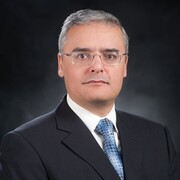Low-Power Image Sensors and Systems
A special issue of Journal of Low Power Electronics and Applications (ISSN 2079-9268).
Deadline for manuscript submissions: closed (30 September 2016) | Viewed by 205
Special Issue Editors
Interests: CMOS image sensor design; energy harvesting devices; circuits and systems design; VLSI sensors and interface electronics; analog/mixed-signal IC design; sensors and microelectronics for optical communication and microfluidic devices; reconfigurable next generation electro-optical architectures for high performance computing; radiation hard electronics and imager design; micro/nano power management circuits and systems
Interests: CMOS Image Sensors; Ultra-low power IC design; Micro Solar Cell Structures; Energy Efficient DC-DC Converters; High-speed Data Converters; High-speed Analog and Mixed-signal IC Design
Special Issue Information
Dear Colleagues,
Today, image sensors, specifically CMOS image sensors, have become an integral part of our daily life in that we interact through widely accessible mobile platforms. As they mature, they will continue to find many applications in next generation electronics systems, including in the Internet of Things (IoT) devices that require either energy autonomous or ultra-low-power image sensors and camera systems. These devices, away from today’s image sensor design trend of building large arrays and faster operations, which, consequently, consume high power and require power optimization on many abstraction levels from devices to algorithms.
This Special Issue will focus on the devices, circuits, design techniques, algorithms, and applications of low-power image sensors and imaging systems. Papers on integrated circuit (IC) design with applications to realize low-power image sensors are particularly encouraged.
Dr. Suat Ay
Dr. Ismail Cevik
Guest Editors
Manuscript Submission Information
Manuscripts should be submitted online at www.mdpi.com by registering and logging in to this website. Once you are registered, click here to go to the submission form. Manuscripts can be submitted until the deadline. All submissions that pass pre-check are peer-reviewed. Accepted papers will be published continuously in the journal (as soon as accepted) and will be listed together on the special issue website. Research articles, review articles as well as short communications are invited. For planned papers, a title and short abstract (about 100 words) can be sent to the Editorial Office for announcement on this website.
Submitted manuscripts should not have been published previously, nor be under consideration for publication elsewhere (except conference proceedings papers). All manuscripts are thoroughly refereed through a single-blind peer-review process. A guide for authors and other relevant information for submission of manuscripts is available on the Instructions for Authors page. Journal of Low Power Electronics and Applications is an international peer-reviewed open access quarterly journal published by MDPI.
Please visit the Instructions for Authors page before submitting a manuscript. The Article Processing Charge (APC) for publication in this open access journal is 1800 CHF (Swiss Francs). Submitted papers should be well formatted and use good English. Authors may use MDPI's English editing service prior to publication or during author revisions.
Keywords
- Low-power image sensors
- Energy autonomous image sensors
- Imaging systems for Internet-of-Things (IoT) applications
- Circuits and design techniques for low-power image sensors
- Power management for low-power imaging and camera systems
- Advanced devices for low-power image sensors
- Algorithms for low-power imaging systems






